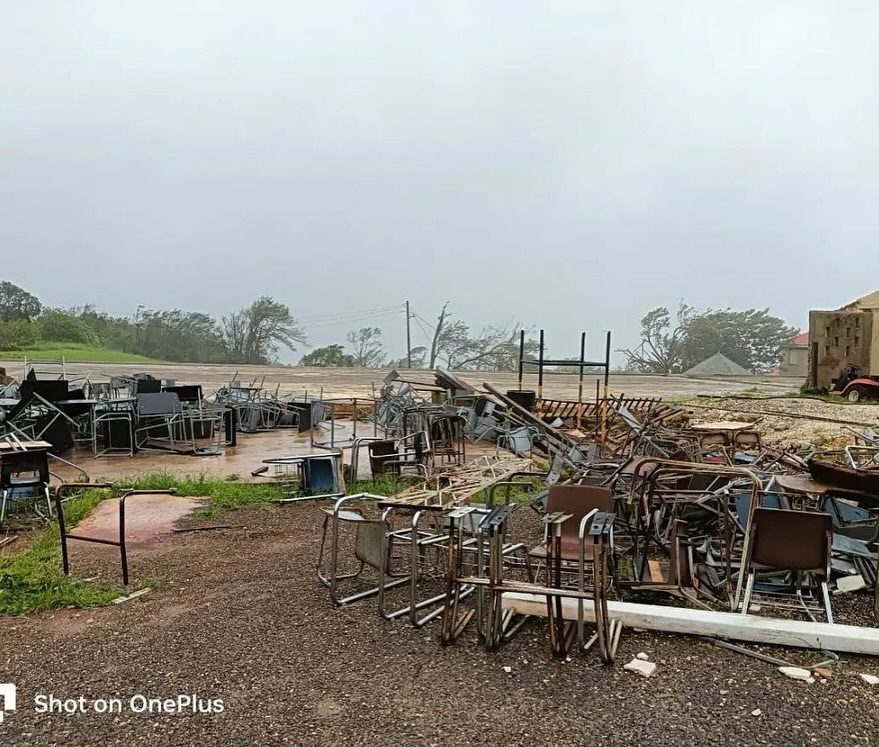Hurricane Beryl moves away from Jamaica, leaving many without electricity and property damages
Hundreds of thousands of Jamaicans remain without power after Hurricane Beryl thundered through the Island. The category four storm—one of the most powerful to ever hit the country since Hurricane Gilbert in September of 1988 —swept along the island’s southern coast on Wednesday night, bringing more than 12 hours of heavy rain. Officials and residents are assessing the damage after an island-wide curfew was lifted early on Thursday.
Beryl, which has now weakened to a category three storm, is headed for Mexico and the Cayman Islands. It left a trail of devastation across the Caribbean, killing at least 10 people. St Vincent and the Grenadines, Grenada, and Venezuela reported three deaths each, while two people have reportedly died in Jamaica. The storm destroyed almost every home on two small islands in St Vincent and the Grenadines, Mayreau and Union.
Fortunately for Jamaica, there was not an extensive amount of damage compare to other Caribbean Islands. There was a moderate degree of damage, with some residents experiencing collapsed roofs, flooding, and fallen trees.
A woman garnered international attention when she was filmed seated on her roof, securing the zinc sheets amidst a Category 4 storm.
In the capital, Kingston, while the winds were extremely strong, they weren’t the hurricane gusts that were expected. But the hours of heavy rain flooded gullies, lowline areas and including rivers.
Nevertheless, Parishes such as Clarendon, St. Elizabeth and St. Thomas experienced some of the worst damages.
“It’s terrible. Everything’s gone. I’m in my house and scared,” said Amoy Wellington, a 51-year-old cashier who lives in Top Hill, a rural farming community in southern St. Elizabeth parish. “It’s a disaster.” A woman died in Jamaica’s Hanover parish after a tree fell on her home, Richard Thompson, acting director-general at Jamaica’s disaster agency said in an interview on local news. Nearly a thousand Jamaicans were in shelters by Wednesday evening, Thompson added.
Munro College in St. Elizabeth and Manning’s School in Westmoreland sustained significant damage, including extensive harm to rooftops, windows and and other part of the properties.






Several roadways in the country’s interior settlements were impacted by fallen trees and utility poles, while some communities in the northern section were without electricity, according to the government’s information service. Kingston resident Pauline Lynch said that she had stockpiled food and water in anticipation of the storm’s arrival. With wind already driving rain, Lynch said, “I have no control over what is coming so I just have to pray that all people of Jamaica is safe and we don’t suffer no deaths, no loss.”

The Jamaica Public Service (JPS) said that 65%—or about 400,000 of its customers—were without power on Thursday morning. The hurricane has delivered “a most devastating blow” to parts of the island, said the MP for St Elizabeth South Western.
Posting on X, Floyd Green said in his constituency “significant numbers of roofs [have been] lost, houses destroyed, trees uprooted, light poles downed, almost all roads are impassable.”

Prime Minister Andrew Holness thanked “first responders, essential services, security forces, and good Samaritans who have assisted others in this time of crisis” on his X account.
